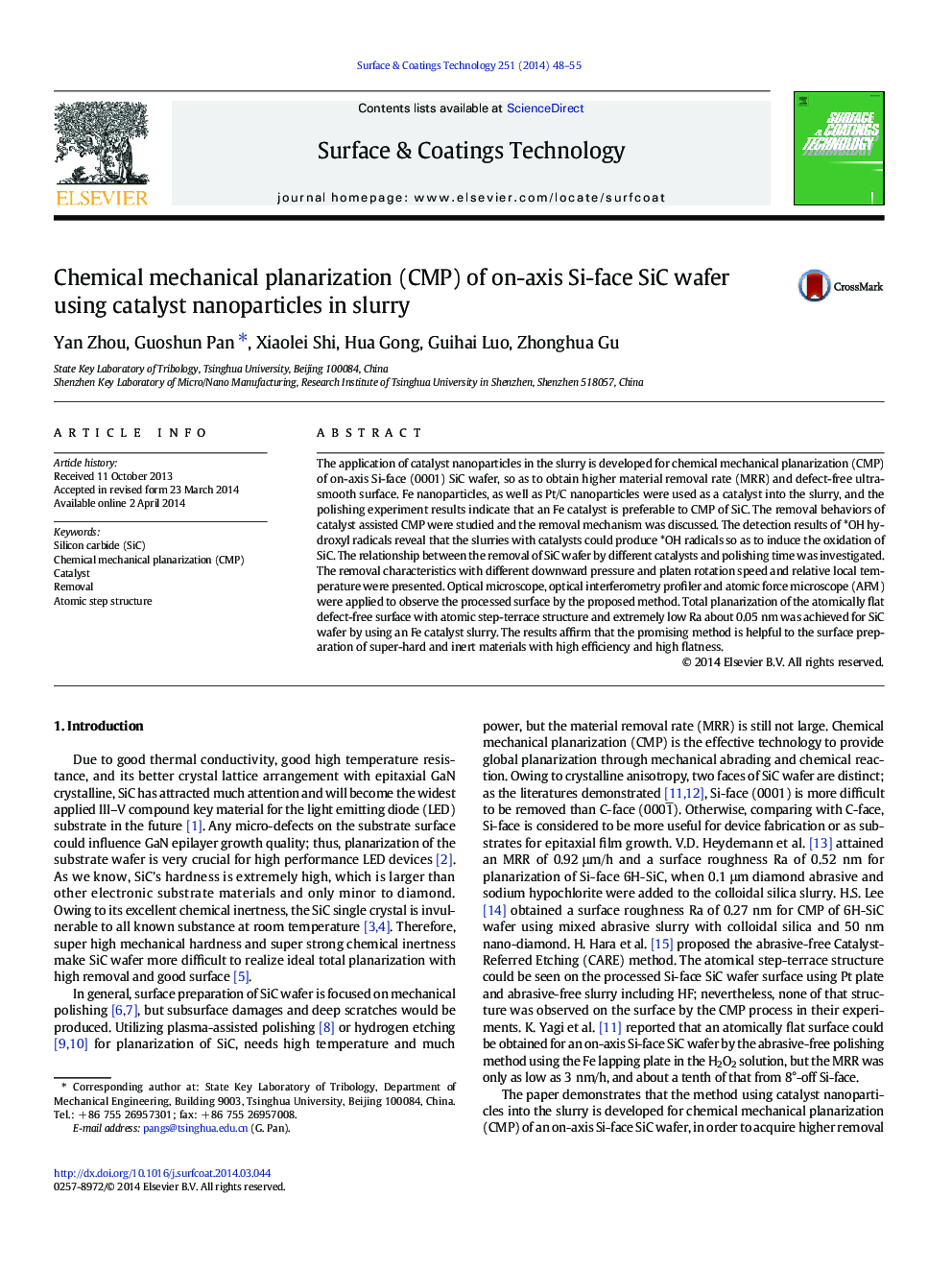| Article ID | Journal | Published Year | Pages | File Type |
|---|---|---|---|---|
| 1657391 | Surface and Coatings Technology | 2014 | 8 Pages |
•Using catalyst nanoparticles was developed for CMP of Si-face SiC to get a higher MRR.•An ultra-smooth defect-free surface with atomic step structure and low Ra was achieved.•Removal characteristics of catalyst assisted CMP and removal mechanism were studied.•The formation of an atomic step-terrace morphology on the SiC surface was discussed.
The application of catalyst nanoparticles in the slurry is developed for chemical mechanical planarization (CMP) of on-axis Si-face (0001) SiC wafer, so as to obtain higher material removal rate (MRR) and defect-free ultra-smooth surface. Fe nanoparticles, as well as Pt/C nanoparticles were used as a catalyst into the slurry, and the polishing experiment results indicate that an Fe catalyst is preferable to CMP of SiC. The removal behaviors of catalyst assisted CMP were studied and the removal mechanism was discussed. The detection results of *OH hydroxyl radicals reveal that the slurries with catalysts could produce *OH radicals so as to induce the oxidation of SiC. The relationship between the removal of SiC wafer by different catalysts and polishing time was investigated. The removal characteristics with different downward pressure and platen rotation speed and relative local temperature were presented. Optical microscope, optical interferometry profiler and atomic force microscope (AFM) were applied to observe the processed surface by the proposed method. Total planarization of the atomically flat defect-free surface with atomic step-terrace structure and extremely low Ra about 0.05 nm was achieved for SiC wafer by using an Fe catalyst slurry. The results affirm that the promising method is helpful to the surface preparation of super-hard and inert materials with high efficiency and high flatness.
